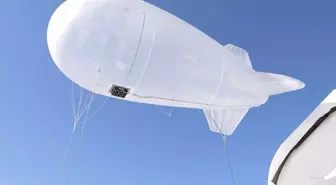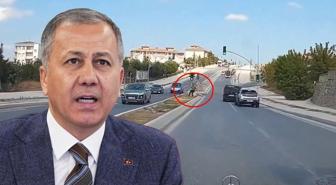Bottles from Bosphorus shed light on the consumption history of Istanbul

Having been a professional diver for over thirty years, marine biologist Hakan Kabasakal sheds light on the consumption history of Istanbul with various bottles he took from the bottom of the Bosphorus, dating back to the Ottoman Period.
"THE BOTTOM OF THE BOSPHORUS IS FULL OF BRANDS FROM THE OTTOMAN PERIOD"
Stating that troublesome part of diving for picking is to remove fishing lead and pleasant aspect is to find various bottles Kabasakal said, "The bottom of the Bosphorus is full of brands from the Ottoman Period."
"The first bottle I found was a bottle of a soda (gazoz) brand that was consumed in the late 1800s and early 1900s during the Ottoman Period and is not used today. As time passed, I continued to pick up different brands from the bottom. For example, I removed gazoz bottles belonging to the city's (Pangalti) Greek community, mustard bottles produced in Paris, various bottles that used in the Ottoman palaces, tar syrup bottles made from resin, and bottles of many foreign companies still operating in Turkey today, which did not take their current names in the early 1900s" said Kabasakal stating he has removed nearly a thousand bottles of nearly 200 brands from the bottom of the Bosphorus until today.
"THESE BOTTLES REFLECT THE CONSUMPTION HABITS OF OUR FELLOW CITIZENS IN THE PAST"
"These bottles reflect the consumption habits of our fellow citizens in the past," said Kabasakal, adding, "I think that the phrase 'brands were not common in the Ottoman period' is not true. We can see that a large number of imported goods came to the country during the Ottoman Period. In addition to these, it is possible to see local production activities. For example, I found a bottle of a soda brand produced in London during the Victorian era at a depth of 24 meters off the seaside of Abraham Pasha's mansion in the Beykoz district. Apart from that, I found medicine bottles belonging to pharmacist Francesco Della Suda, who had worked as a pharmacist in building number 318 opposite the St. Antuan Church in Beyoğlu and received the title of pasha during the Ottoman period, both in Ahırkapı and Beykoz."
Kabasakal stated that he cleaned the Bosphorus from heavy metals by diving and chose his diving location from among the fishing lanes on the shore, adding that he reached the story of the material he found by researching different sources.
- Istanbul




